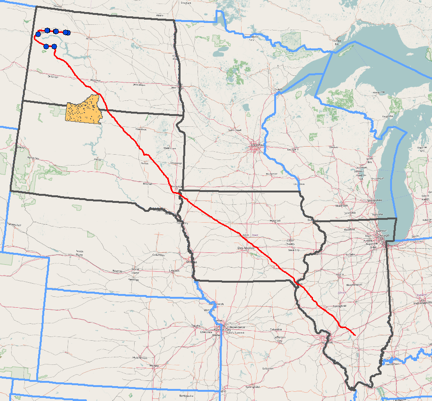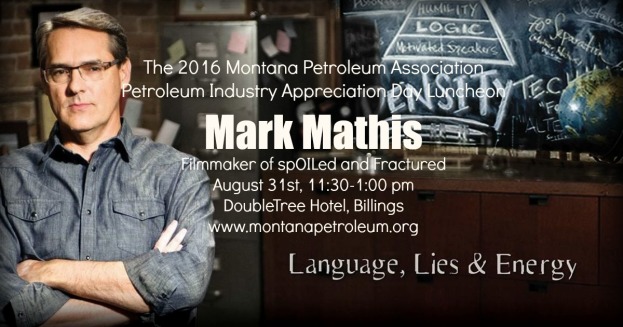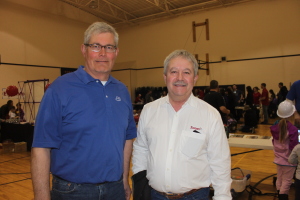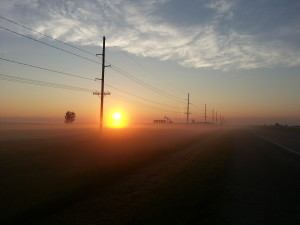Read more about DAPL: Reflecting on the Dakota Access Pipeline and the Next Chapter for the Bakken, April/May 2017 Issue.
By: Bob van der Valk
The Dakota Access Pipeline (DAPL) route begins in the Bakken shale oil fields in northwest North Dakota and travels in a more or less straight line southeast, through South Dakota and Iowa, terminating at the oil tank farm near Patoka, Illinois. The pipeline is currently under construction by Dakota Access, a Houston, Texas based company and subsidiary of Energy Transfer Partners.
The 1,172 mile pipeline has a permanent easement of 50 feet and a construction right-of-way of up to 150 feet. The 30-inch diameter pipeline is at least 48 inches underground from the top of the pipe or 2 feet below any drain tiles. The map below shows the route and where it intersects with the Standing Rock Indian Reservation in orange.

The pipeline is planned to carry 470,000 barrels per day of crude oil “based on contractual commitments to date”. The capacity may be increased up to 570,000 barrels per day.
The company estimated the pipeline would cost $3.78 billion, of which $1.4 billion would be invested in the North Dakota portion, $820 million in the South Dakota portion, $1.04 billion in the Iowa portion, and $516 million in the Illinois portion. Of this, $189 million would be paid to landowners.
Energy Transfer Partners estimates that the pipeline would create up to 40 permanent jobs and 8,200 to 12,000 temporary jobs.
In March 2016, the United States Fish and Wildlife Service issued a sovereign lands construction permit for the DAPL. In late May, 2016, the permit was temporarily revoked in three counties of Iowa, where the pipeline would cross the Big Sioux River and the Big Sioux Wildlife Management Area; historic and cultural sites of the Upper Sioux Tribe, including graves in Lyon County. Also in May, 2016, Iowa farmers filed lawsuits to prevent the state from using eminent domain to take their land.
Citing potential effects on and lack of consultation with the Native American Tribes, most notably the Standing Rock Sioux, in March and April, 2016, the Environmental Protection Agency, the Department of Interior, and the Advisory Council on Historic Preservation asked the USACE to conduct a formal Environmental Impact Assessment and issue an Environmental Impact Statement. However, in July and August, 2016, USACE approved the water crossing permits and issued permissions for all but one necessary for the pipeline construction.
In June, 2016, the IUB voted 2 to 1 (Libby Jacobs and Nick Wagner in favor and Chairwoman Geri Huser against) to allow construction on non-sovereign lands to continue. The Sierra Club said this action was illegal before the US Corps of Engineers authorized the project. In late June, 2016, construction was allowed to resume in Lyon County after plans were changed to route the pipeline 85 feet below the site using directional boring, instead of trenching and disturbing the soil on the surface. In December, 2016, the approval was disputed in the Polk County District Court.
On July 27, 2016, the Standing Rock Sioux Tribe sued the USACE in the United States District Court for the District of Columbia. On September 9, 2016, U.S. District Judge James Boasberg denied the motion for preliminary injunction. On September 10, 2016, the Standing Rock Sioux Tribe filed an appeal which was denied on October 9, 2016.
In September the U.S Department of Justice received more than 33,000 petitions to review all permits and order a full review of the project’s environmental effects. On September 9, 2016, a joint statement was issued by the US Departments of Justice, Army, and Interior temporarily halting the project on federal land bordering or under the Lake Oahe reservoir. The US federal government asked the company for a “voluntary pause” on construction near that area until further study was done on the region extending 20 miles around Lake Oahe. Energy Transfer Partners rejected the request to voluntarily halt construction on all surrounding private land and resumed construction. On September 13, 2016, chairman and CEO of Energy Transfer Partners, Kelcy Warren, responded to the federal government’s request, saying concerns about the pipeline’s impact on the water supply were “unfounded”. Warren said that “multiple archaeological studies conducted with state historic preservation offices found no sacred items along the route”. Warren said that the company will meet with officials in Washington “to understand their position and reiterate our commitment to bring the Dakota Access Pipeline into operation.”
On November 1, 2016, President Obama announced that his administration “is monitoring the situation and has been in contact with the USACE to examine the possibility of rerouting the pipeline to avoid lands that Native Americans hold sacred”.
On November 14, 2016, the USACE announced that “the Army has determined that additional discussion and analysis are warranted in light of the history of the Great Sioux Nation’s dispossessions of lands, the importance of Lake Oahe to the Tribe, our government-to-government relationship, and the statute governing easements through government property.”
Energy Transfer Partners responded by criticizing the Obama administration for “political interference” and said that “further delay in the consideration of this case would add millions of dollars more each month in costs which cannot be recovered.”
North Dakota Governor Jack Dalrymple criticized the decision saying the pipeline would be safe and that the decision was “long overdue”.
Craig Stevens, spokesman for the Midwest Alliance for Infrastructure Now (MAIN) Coalition, called the Corps’s announcement “yet another attempt at death by delay” and said the Obama administration “has chosen to further fan the flames of protest by more inaction.”
North Dakota Senator John Hoeven said in a statement that the delay “will only prolong the disruption in the region caused by protests and make life difficult for everyone who lives and works in the area.”
Speaking to CBS News in November, Kelcy Warren said that it would be “100 percent sure that the easement gets granted and the pipeline gets built” when newly elected President elect Donald Trump came into office in January.
On December 4, 2016, the USACE announced that it would not grant an easement for the pipeline to be drilled under Lake Oahe and was undertaking an environmental impact statement to look at possible alternative routes.
Jo-Ellen Darcy said that “the best way to complete that work responsibly and expeditiously is to explore alternate routes for the pipeline crossing”. Energy Transfer Partners and Sunoco Logistics Partners issued a same-day response saying that the White House’s directive “is just the latest in a series of overt and transparent political actions by an administration which has abandoned the rule of law in favor of currying favor with a narrow and extreme political constituency.” They said that the companies “fully expect to complete construction of the pipeline without any additional rerouting in and around Lake Oahe. Nothing this Administration has done today changes that in any way.”
On January 18, 2017, the USACE filed its formal Notice of Intent to conduct the Environmental Impact Statement process. The notice opened a thirty-day comment on the scope of the EIS, which concerns the crossing of Lake Oahe. The proposed EIS would consider “Alternative locations for the pipeline crossing the Missouri River”, direct and indirect risks, and impacts of an oil spill on the lake, the Standing Rock Sioux’s water supply, and their “water, treaty fishing, and hunting rights”; as well as their treaty rights to the lake. The same day U.S. District Judge James Boasberg denied ETP’s request to delay the EIS process.

President Donald Trump signing the Executive Order to advance the construction of the Keystone XL and Dakota Access pipelines. January 24th, 2017
On January 24, 2017, President Donald Trump signed an executive order to advance the construction of the pipeline under “terms and conditions to be negotiated”. The order would expedite the environmental review that Trump described as “an incredibly cumbersome, long, horrible permitting process”.
On February 7, 2017, the USACE sent to the United States Congress a notice of intent to grant an easement under Lake Oahe no earlier than 24 hours following notification of the delivery of the notification. On February 9, 2017, the Cheyenne River Sioux sued the easement decision, citing an 1851 treaty and interference with the religious practices of the tribe.
On February 22, 2017, the protest site was cleared, as that was the deadline for the camp to be cleared by protesters. Although many left voluntarily, ten people were arrested in conflict of this event. They were given the option to leave voluntarily and even with the arrests, there was no major conflict.
The “fill” of the DAPL with Bakken crude oil is expected to start no later the second quarter of this year.

















